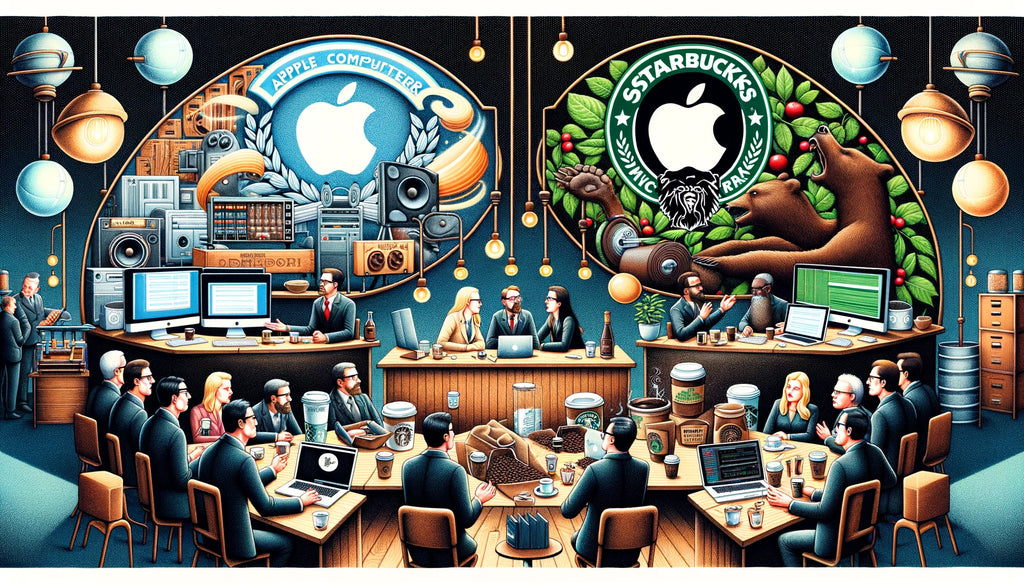5 Notorious Intellectual Property Battles and What They Teach Us
Intellectual property (IP) safeguards innovation, creativity, and competitive advantage across various sectors. It grants individuals and organizations the legal right to capitalize on their ingenuity, protecting their ideas, creations, and inventions. Throughout history, however, conflicts have arisen when these rights are contested. Some of these instances have garnered global attention due to their complexities, significant stakes, and far-reaching repercussions.
Emerson Thomson Bennett will examine some of the most well-known intellectual property disputes of recent history, analyzing the valuable lessons they offer to businesses and creators who are working to secure their work.

1. Apple versus Samsung (2011): The Fight Over Smartphone Aesthetics
The Core Conflict
The legal clash between Apple and Samsung is one of the most recognizable intellectual property disputes of our time, triggered by the rise of the smartphone industry.
Apple alleged that Samsung had replicated the design and features of the iPhone. They specifically accused the company of infringing on Apple’s patents relating to the iPhone's sleek design, icon grid arrangement, and touch interface. Samsung countered with its own accusations, asserting that Apple had similarly violated some of their own patents.
The Final Verdict
The legal proceedings spanned multiple countries and years, leading to mixed results based on the specific jurisdiction. The most notable ruling arrived in 2012, when a U.S. jury awarded Apple over $1 billion in damages for Samsung’s infringement of its patents. This figure was subsequently reduced through appeals, but the case ultimately concluded in 2018 with an undisclosed settlement amount.
The Key Takeaways
The Significance of Design Patents: This case highlighted the importance of safeguarding product designs through intellectual property laws. Even aesthetic characteristics of a product can have significant value.
The Need for Thorough, Unambiguous Protection: Businesses should guarantee that their IP protections are current, enforceable, and prepared to withstand challenges in court.
International Considerations: Intellectual property disputes in a globalized economy often transcend geographical boundaries, underscoring the importance of understanding international intellectual property regulations.
2. The McDonald’s "Big Mac" Trademark Dispute (2019)
The Core Conflict
Few trademarks are as iconic as the McDonald's "Big Mac," but the company saw its rights to the name challenged by an Irish fast-food chain, Supermac's. Supermac's contended that McDonald's was trademarking the "Big Mac" name across Europe without sufficient usage of the mark. Supermac's argued that it was being unfairly prevented from expanding due to McDonald's overly broad intellectual property claims.
The Final Verdict
The European Union Intellectual Property Office (EUIPO) sided with Supermac's in 2019, ruling to cancel McDonald's "Big Mac" trademark across Europe. This decision not only enabled Supermac's to expand but also questioned McDonald's tactic of aggressively trademarking phrases without consistent usage.
The Key Takeaways
Use It or Lose It: Trademark laws often mandate evidence of consistent commercial use. Businesses should ensure their trademarks are actively employed and not merely registered defensively.
Avoid Overreach: This case demonstrates the dangers of being excessively assertive with trademark enforcement. Businesses must balance protecting their brand and avoiding unnecessary litigation that could damage their reputation.
Regional Differences are Important: Trademark laws vary significantly across different jurisdictions. Companies with global ambitions must abide by local legal standards.
3. Mattel vs. MGA Entertainment (2004-2010): Doll Wars
The Core Conflict
This high-stakes legal battle focused on the creation of the Bratz doll line, owned by MGA Entertainment. Mattel, the maker of Barbie, claimed that the idea for Bratz was developed by Carter Bryant, a former Mattel employee, during his employment with the company. Under Mattel’s employment agreement, they stated that Bryant’s creations belonged to them.
MGA filed a counterclaim, arguing that Mattel was trying to hinder competition in the fashion doll market by incorrectly claiming ownership of Bratz.
The Final Verdict
After years of legal battles, the case became one of the most expensive in history, with Mattel being awarded $100 million initially. However, this ruling was overturned on appeal. MGA ultimately maintained its rights to the Bratz brand.
The Key Takeaways
Employee Agreements are Crucial: This case illustrates the vital importance for businesses to create clear contracts regarding intellectual property ownership. Both employers and employees should understand who owns the rights to creations made during and after employment.
Litigation Can be Expensive: Lengthy legal battles can deplete significant resources, and even winning might not outweigh the financial and reputational costs.
Innovation Can Thrive in the Face of Competition: Instead of attempting to eliminate competition through litigation, businesses may benefit from focusing on creating unique, competitive products.
4. Warner Bros. vs. 20th Century Fox (2008-2009): The "Watchmen" Rights Struggle
The Core Conflict
The dispute over the film adaptation of Watchmen, a critically acclaimed graphic novel, set Warner Bros. against 20th Century Fox in a legal battle over distribution rights. Fox asserted it still held distribution rights to the story, even though it hadn't actively developed the project for years. Warner Bros., which had invested significantly in the production, argued that Fox lacked the legal grounds to prevent the release.
The Final Verdict
The case was settled before going to trial, with Warner Bros. paying Fox a considerable sum to resolve the dispute and proceed with the movie's release.
The Key Takeaways
Clear Contract Transfers are Essential: Rights to intellectual property must be clearly outlined and documented, especially during transfers or lapses in usage.
Dormant IP Holds Value: This case highlights that even unused rights hold potential value. Ownership of old projects, patents, or trademarks can unexpectedly resurface.
Collaboration is Key: Lengthy intellectual property disputes can delay projects and increase costs. When appropriate, negotiation and settlement can save time and preserve relationships.
5. Taylor Swift vs. Evermore Park (2021): Copyright Dispute Over Song Titles
The Core Conflict
Taylor Swift faced copyright claims from Evermore, a fantasy-themed amusement park, concerning the use of “Evermore” for her album title. The park alleged that Swift’s album infringed on its trademarked name and confused visitors. Swift counter-sued, asserting the park had used her music in its attractions without proper licensing.
The Final Verdict
After contentious exchanges, both parties dropped their lawsuits in an amicable resolution.
The Key Takeaways
Cross-Industry IP Overlaps are Complex: This case illustrates the challenges that arise when trademarks and copyrights overlap across different industries, such as music and themed entertainment.
Proactive IP Research Reduces Risk: Before launching a brand, individuals and companies should research existing trademarks to avoid potential conflicts.
Quick Resolutions Lessen Negative Publicity: Legal disputes can damage public perception. Swift and Evermore demonstrated that quickly resolving disputes can prevent needless harm to reputation.








Comments (0)
No comments yet. Be the first to comment!